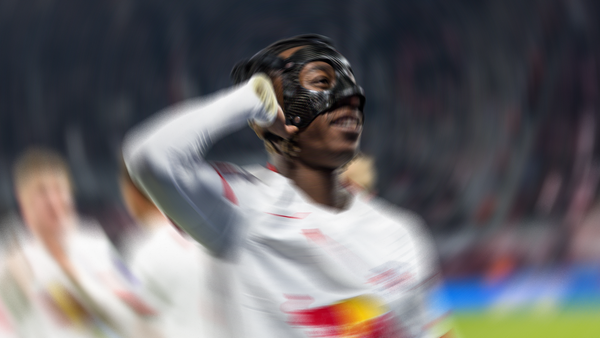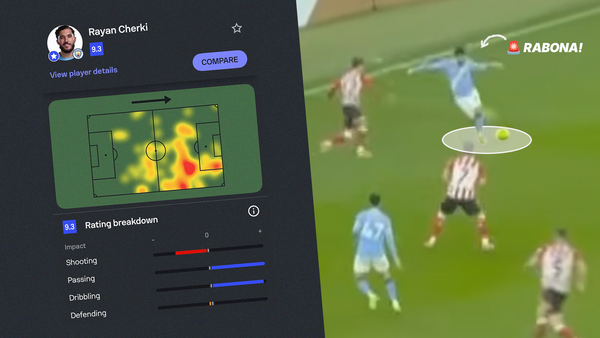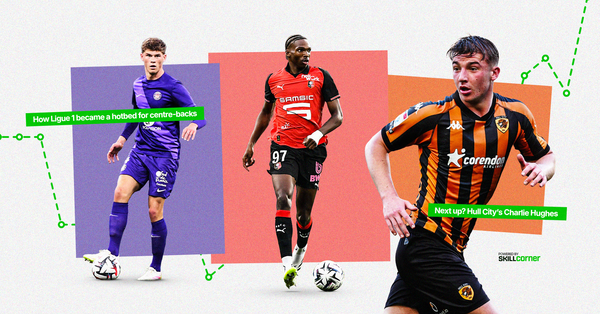Alejandro Garnacho would make a good attack great
Manchester United are...not very good. Has that struggle devalued their Argentinian firebrand? Ashwin Raman investigates
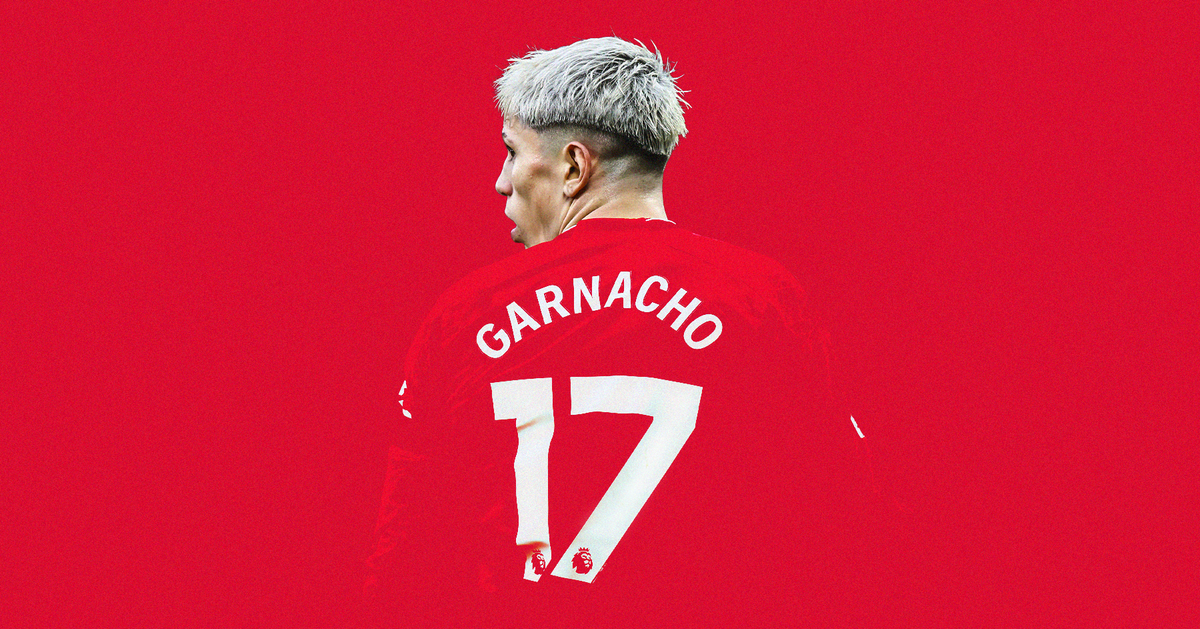
Alejandro Garnacho’s name will dominate the final days of this transfer window. If you haven’t heard a million times already, the Argentine winger looks set to leave Manchester United, with a transfer to Chelsea on the horizon for a reported £35-40 million.
While Garnacho provided great promise at Manchester United, things turned sour in the months following Ruben Amorim’s appointment. The 21-year-old’s perceived personality issues – or at least those of his brother – didn’t make for the best PR, and Garnacho was eventually frozen out and put up for sale. Issues with dribbling and consistency didn’t help him either, and the collective optimism around him has faded.
But how much of what ails Garnacho at United comes down to his skillset? And to what extent would his predicament change at a better-performing side?
I’d argue Garnacho’s toolbox is likely to thrive at greener pastures - he’s the kind of player who can turn good attacks into great attacks.
Let’s break it down.


879/1000
Our summer subscription drive is nearing its conclusion. We set a lofty goal of 1000 - though we're still not there, we're incredibly grateful for how close you've brought us.
If you'd like to get several bespoke pieces of narrative analysis in your inbox every week, there's still time to join up for the season ahead.
This is football writing as it used to be: no ads, no clickbait, just great stories by real people. Help us keep it alive.
United's stagnant attack and player skillsets
It’s no secret that Manchester United’s attack has severe issues, even with the change in managers. Since Amorim took charge, United have scored just 37 goals in the Premier League, the sixth-lowest total when excluding teams promoted for the 2025-26 season. Two particular issues impacted Garnacho’s individual performances.
First, ball progression is United’s primary challenge. As we discussed last week, United are effectively a mid-table side when it comes to moving the ball into the final third.
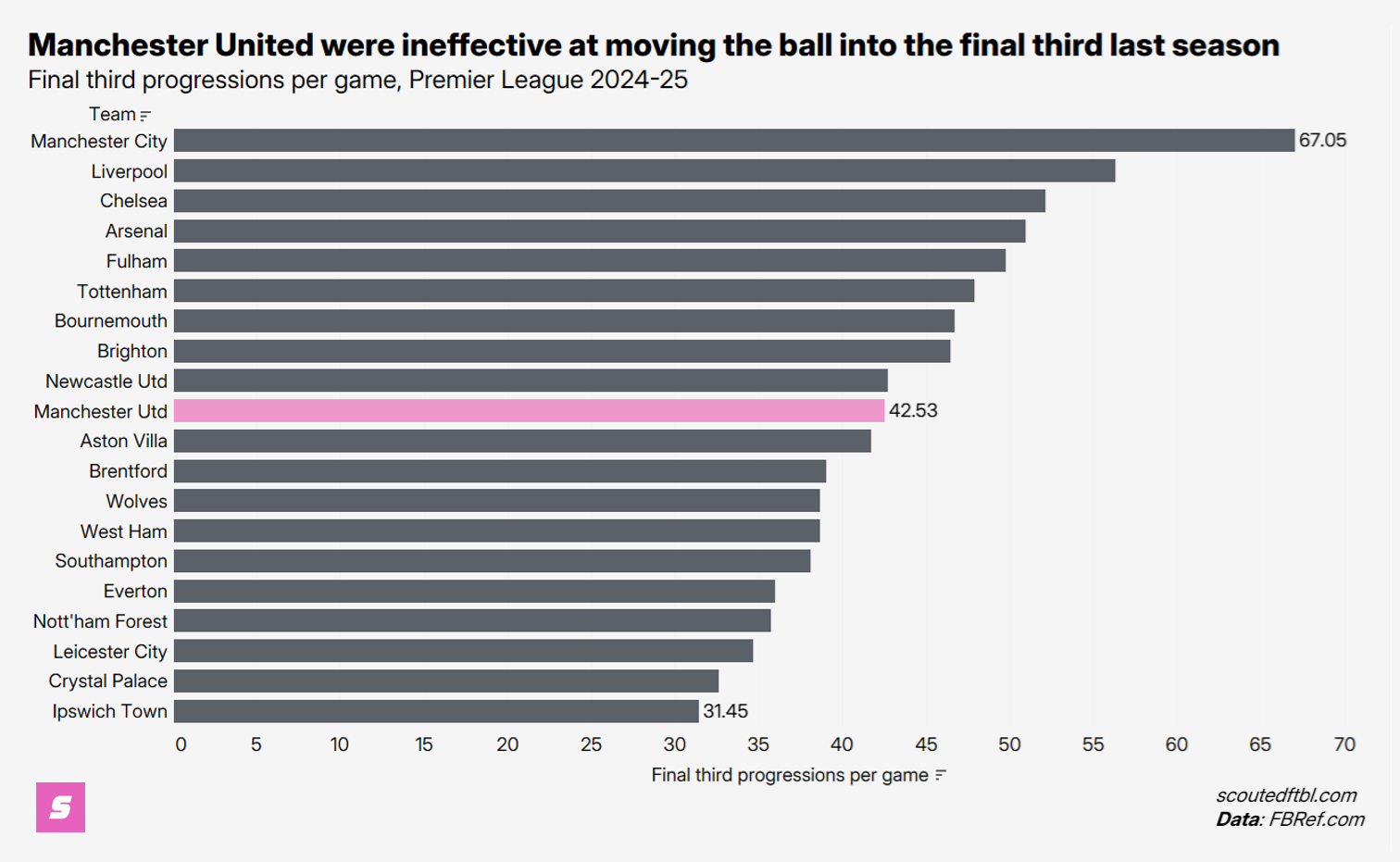
Plus, when United do get into the final third, the player with the ball encounters an underpopulated penalty area. In Amorim’s version of the 3-4-3, United don’t commit many players to the box by elite-club standards…


